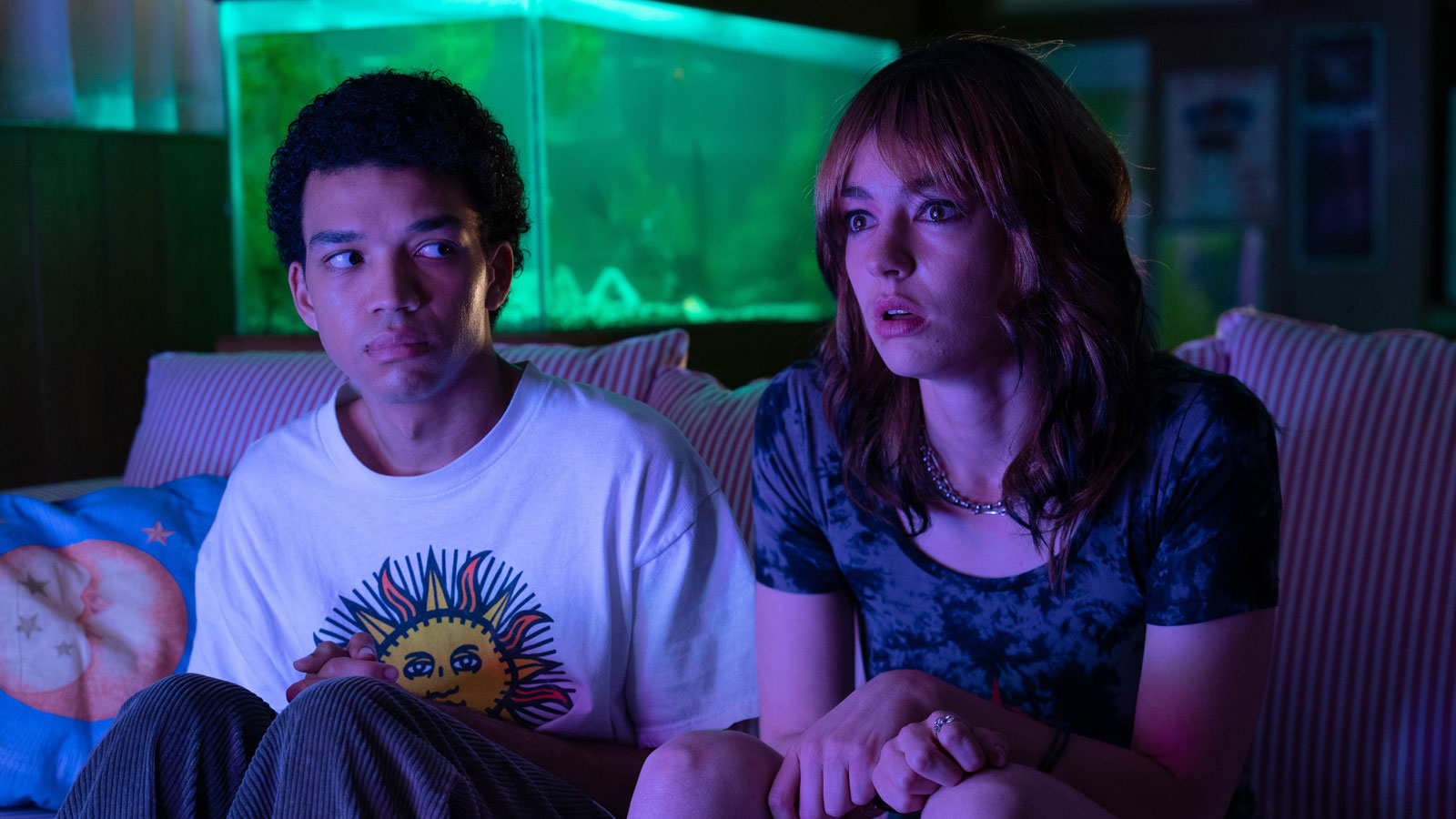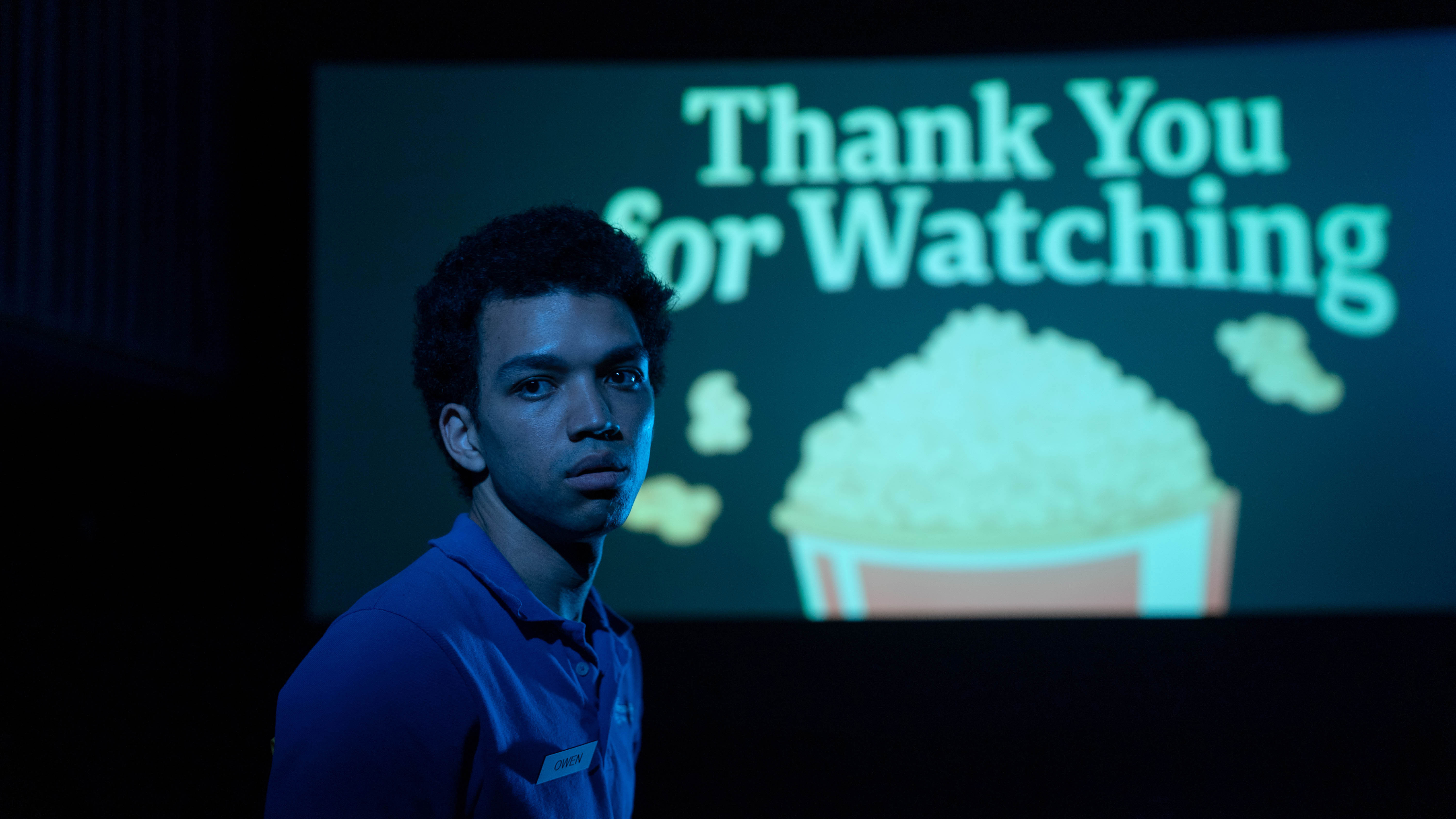“There Is Still Time”: Shimmering Trans Temporalities in Jane Schoenbrun’s I Saw the TV Glow

Critics Campus 2024 participant Dylan Rowen discusses the reflections on trans and queer experience in I Saw the TV Glow’s existential horror–infused tale of hope and letting go.
“Trans cinematic space,” writes queer theorist Eliza Steinbock in their book Shimmering Images, “offers a material means of achieving embodiment through cut and sutured images that are shot through with projections of desire.” How might these projections appear on screen? They might materialise like in Jane Schoenbrun’s second narrative feature, I Saw the TV Glow: a coming-of-age horror drama drenched in neon that vibrates and flickers with analog static. What begins as a tale of suburban ennui diverts into fantastical, allegorical territory. To borrow Steinbock’s term, the film shimmers; it takes on the coruscating quality of a dream, or perhaps a nightmare.
On leaving the cinema, I was left with a deep sense of dread: that fear of being known and of being seen. Taken literally, I Saw the TV Glow is the story of two high school outcasts in the mid-to-late 90s, Owen (Justice Smith) and Maddy (Brigette Lundy-Paine), who bond over their shared connection with a late-night television show called The Pink Opaque. Like almost everything from this era, the show is kitschy: a Buffy-esque caper following two teen girls (played by Lindsey Jordan and Helena Howard) who communicate on the psychic realm to defeat the monster of the week while escaping the clutches of a sinister moon-faced man called Mr. Melancholy (Emma Portner). So far, very 90s. The show, though, soon calls into question the nature of Maddy and Owen’s reality.
After school one day, Maddy asks if Owen likes girls or boys, and he replies, with a lump in his throat: “I think I like TV shows.” After the series is cancelled, Maddy abruptly disappears. As we learn through flashbacks and voiceovers from an increasingly ageing Owen, The Pink Opaque infects and radiates outwards; it fundamentally alters their identities. The pixelated VHS texture of The Pink Opaque shimmers from the fictional world to the real, where boundaries between the two begin to dissolve. Owen stumbles across a fallen powerline that disperses strange static into the air; an ice-cream truck discharging an otherworldly glow and smoky haze appears as if from a memory. It is in these shimmers that Owen starts to see and feel himself differently. There is a queerer, trans future that Owen moves towards, even if trepidatiously.

I Saw the TV Glow
In truth, the plot of this film is frustrating to describe. I Saw the TV Glow is far too rich and metaphorically dense to condense into anything as prescriptive as a logline. When Maddy re-emerges a decade later, they are armed with a new haircut, a new name (that we never learn) and a host of urgent pleas. The Pink Opaque, they insist, was never merely a TV show but a mirror held up to their lives. Is Maddy merely an impassioned fan? Or is there something more mystical, or sinister, going on? Where does the TV show end and real life begin? Can we ever escape its afterglow?
Perhaps these narrative specificities pale in comparison to the film’s raw feeling: the dizzying experience of trans identity; the confines of the closet as rendered in dreadful and excruciating detail. I and numerous trans and queer friends might recognise ourselves in the film’s traumatic portrayal of the closet; and, indeed, as Owen ages in the film – finding himself in a dead-end job, in a life that isn’t quite right – I Saw the TV Glow fully leans into existential horror. Schoenbrun invokes the bizarro dread of Twin Peaks: The Return with an extended musical aside; there’s also a Cronenbergian depravity in the film’s turn toward bodily mutilation; and Mr. Melancholy’s face recalls the moon man from Georges Méliès’s A Trip to the Moon. In linking this lineage of horror cinema with a fundamentally trans narrative, Schoenbrun’s film shimmers with possibility. It is terrifying, discomforting, beautiful. Coming out of the closet can also feel like this.
Towards the film’s end, after Maddy disappears a final time, they leave Owen a scrawl in the middle of the road, lit up in the film’s signature pink hue: “There is still time.” This is a wake-up call: there is still time – time to transition, to become a different person, to live your life on your own terms. You can grieve your old self; and Schoenbrun depicts, with extremity, different versions of what that might feel like: opening up your chest in a public restroom, or asking a stranger to bury your old body so you can return, cicada-like, into a new world with a different body. But the wake-up call can be transcendent, too: with a little help from some formative piece of media you hungrily and secretly consumed in the dark flesh of the night, there can still be hope in all the horror of the past. Or, as Schoenbrun themselves put it in a tweet: “I dunno I guess it’s pretty cool that my movie is helping some ppl understand and articulate their own transness.”
I Saw the TV Glow is a chronicle of corporeality, what makes and breaks a life, and our efforts to both escape from and make a world – and body – of our own. This film gleams with both despair and hope: a reflection of the grief of the closet, but also a reminder of the endless futures spiralling before us. This film is a shot in the night, an alarming scream, a manifesto: There is still time.